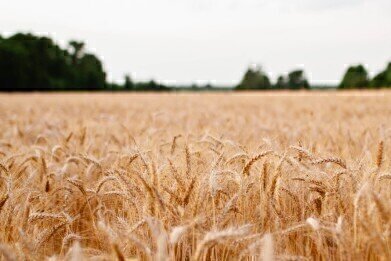Environmental Laboratory
What is Carbon Farming?
Jun 09 2016
Carbon farming is an innovative approach to tackling climate change which attempts to reduce the amount of carbon in our atmosphere by storing it in vegetation and soil.
Since trees and plants naturally absorb carbon, it only makes sense to try and leverage this phenomenon to at once reduce carbon emissions and increase oxygen output. Meanwhile, storing carbon in the soil prevents it from escaping into the environment and contributing to global warming, while simultaneously enriching the soil and improving agricultural production.
Why Pursue Carbon Farming?
The Earth is currently in something of a crisis, with industry and agriculture both releasing huge amounts of harmful gases into the atmosphere. Methane, which is released by cows and other livestock in huge quantities, and carbon, which comes from the combustion of fossil fuels and other means, are the two biggest contributors to global warming.
Carbon capture and storage (CCS) presents a viable method of limiting the amount of carbon in the atmosphere, though in an industrial setting the practice is still very expensive and relatively un-researched. When it comes to agriculture, carbon farming could represent a more natural and incredibly effective method of CCS, without all of the expensive equipment that normally comes with it.
Meanwhile, carbon farming can also help to alleviate food shortages around the globe. Research into using plant mitochondria to strengthen resilience has been seen as one way of ensuring food security, but carbon farming could be another. This is due to the fact that it can reduce erosion and the subsequent loss of soil, strengthen its structure, increase its fertility while reducing its salinity and contribute to a greater biodiversity through an all-round healthier ecosystem.
How to Pursue Carbon Farming
There are a variety of methods by which carbon farming can be pursued, and these can range from a single alteration to the farming routine to a complete overhaul of all on-site practices to achieve maximum carbon capture and storage. Among others, the possible techniques available include:
- Effective management of grazing areas
- Composting and compost teas
- Mulching
- Total groundcover (not leaving any areas of the Earth uncovered)
- Natural sequence farming
- Permaculture
- Green manure
- Manure management
- The use of natural fertilisers
- Control and direction of foot, animal and vehicle traffic
- Agroforestry
- The incorporation of dung beetles
- Biodynamics
- Genetic modification of animals to manipulate methane emissions
- Using feed supplements which induce low methane emissions
- Treatment of subsoil areas
- Probiotics
- Stimulation of soil
As you can see, there are a wide range of options even in this non-exhaustive list. The practice is becoming more and more popular and is even potentially lucrative, as in places like Australia. There, the government has implemented an emissions reduction fund, which rewards farmers with a fixed financial credit for each tonne of carbon that is successfully stored in the land or otherwise not emitted into the air.
Digital Edition
IET 34.2 March 2024
April 2024
Gas Detection - Biogas batch fermentation system for laboratory use with automatic gas analysis in real time Water/Wastewater - Upcycling sensors for sustainable nature management - Prist...
View all digital editions
Events
Apr 30 2024 Melbourne, Australia
Apr 30 2024 Birmingham, UK
May 03 2024 Seoul, South Korea
May 05 2024 Seville, Spain
May 06 2024 Minneapolis, MN, USA


















